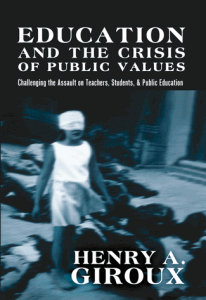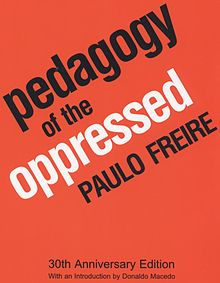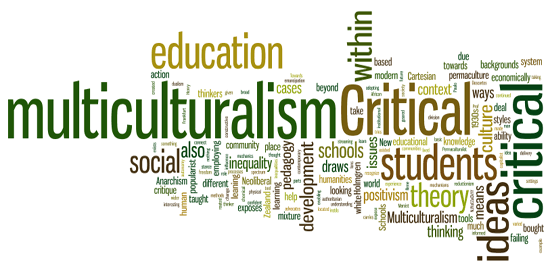The Origin of ideas
Critical multiculturalism was born out of the ongoing development of the ideas of the Frankfurt School of social research in the 1930s. Critical multiculturalism originally came into being as a means of addressing a multitude of inequalities both structural and institutional that are taking place within modern education establishments within multicultural settings. Critical multiculturalism and its development have continued beyond the 1930s and into the modern world with thinkers and activists such as the Brazilian revolutionary thinker Paulo Freire, Henry Giroux, and Prof Peter McLaren of UCLA, amongst others.
Towards a definition and an understanding of its ideas
 In some ways Critical multiculturalism is leaning towards the original idea of popularist education as a tool of emancipation for the economically downtrodden, but it goes much further, is much wider in scope and is rooted in critical theory. Critical multiculturalism is an enabling form of education that instils in its students the ability to bring about social change, it has been described by Neoliberal thinkers as a ‘Political education’ because it exposes issues relating to why students are in the economic situation they in, why streaming exists, in effect it exposes the mechanisms of inequality to those who are themselves victims of inequality.
In some ways Critical multiculturalism is leaning towards the original idea of popularist education as a tool of emancipation for the economically downtrodden, but it goes much further, is much wider in scope and is rooted in critical theory. Critical multiculturalism is an enabling form of education that instils in its students the ability to bring about social change, it has been described by Neoliberal thinkers as a ‘Political education’ because it exposes issues relating to why students are in the economic situation they in, why streaming exists, in effect it exposes the mechanisms of inequality to those who are themselves victims of inequality.
Politically critical Multiculturalism leans toward Anarchism, Marxist and Feminist thought. It is able to expose the system that enslaves them by looking through the lens of critical theory. Critical theory is a critique of our society and the culture that emanates from it, this critique draws from a broad and varied spectrum of ideas from social science and humanities. By employing critical theory students learn how to be both critical and analytical; these tools enable the autonomy of the student to come to fruition.
Teaching styles
There are different styles and strategies of teaching and providing instruction to students, and also different ways of studying to become a teacher, this is referred to as pedagogy. Within critical multiculturalism, adopting a Critical pedagogy can help students to develop a consciousness of freedom, to recognize authoritarian tendencies, and connect knowledge to power and the ability to take constructive action based on this knowledge. Like critical theory, a critical pedagogy draws on social sciences and humanities, but more importantly it also draws on the ideas of feminism, Anarchism, and within a contemporary context, ecology.
Philosophical mechanics of Critical multiculturalism
 Permaculturalist David Holmgren suggests that the proliferation of Philosopher Rene Descartes Cartesian dualism has brought about a separation of man and natural habitat, similarly critical multiculturalism would also argue that Cartesian thinking has bought about a division within how education is delivered, an example of this is how learning is taught in abstract chunks as opposed to holistically learning about systems and models.
Permaculturalist David Holmgren suggests that the proliferation of Philosopher Rene Descartes Cartesian dualism has brought about a separation of man and natural habitat, similarly critical multiculturalism would also argue that Cartesian thinking has bought about a division within how education is delivered, an example of this is how learning is taught in abstract chunks as opposed to holistically learning about systems and models.
This holistic leaning of both Holmgren and advocates of critical multiculturalism is really making a stance against the reductionism that has been an influence in education due to the early ideas of positivism playing a leading role in the development and delivery of popularist education, both positions rail against positivism which reduces all human processes into chemical, physical or physiological events, which in itself means that positivism tries to provide a scientific theory for social phenomenon, and this translated at a very basic level within an educational context see’s human beings as nothing more than responsive machines. Critical Multiculturalism also emphasises that education for the community should take place within the community; within this context it is firmly routed in localism.
Critical multiculturalism in action
Schools employing the ideas of critical multiculturalism have existed in the US and in New Zealand, in both cases there is extreme inequality, issues of racism and failing students due to a failing system. In the US schools the students were mainly from a mixture of African American, Hispanic and white backgrounds, likewise in New Zealand, the schools ethnic mixture was made up on the aboriginal Maori people and white settles or European origin. Both Schools were struggling to deal with the issues of poverty, social exclusion and race In both cases, both schools were located in very poor parts of town, and in both cases the schools were a success in that they bought communities closer together and created more confident and informed students who were geared up to deal with a world that had enslaved their parents.
Critical Multiculturalism and Permanent culture
In terms of the development of a permanent culture from an educational standpoint, Critical multiculturalism is an interesting collection of ideas and practices that would serve to help in the transition from Neoliberal thinking and ways of doing things, to something based on collective effort and mutual cooperation. Critical multiculturalism has the tools to strip away the ideas that underpin the temporary unsustainable culture the capitalist thinking has given us; it gives us the means of looking beyond that which is divisive towards that that is unifying. As someone who has both taught students from economically disadvantaged backgrounds and practiced and lived the permaculture way I would say that critical multiculturalism should be the vessel that carries, or incorporates permaculture ethics and methods into the future via the education experience.
Steve

